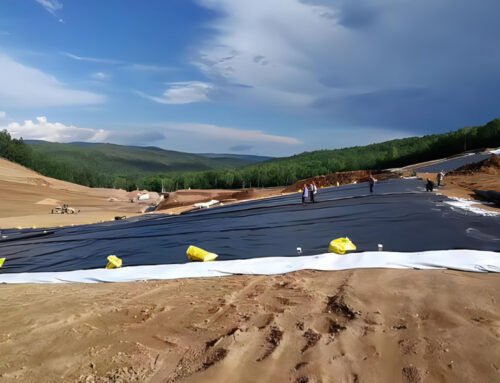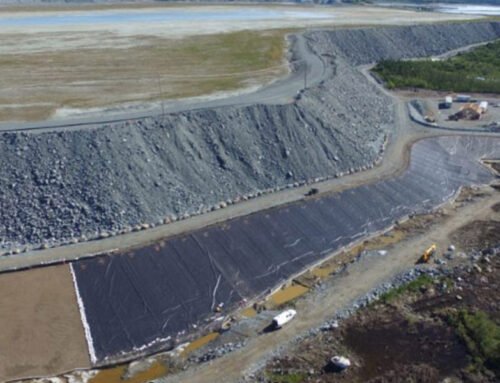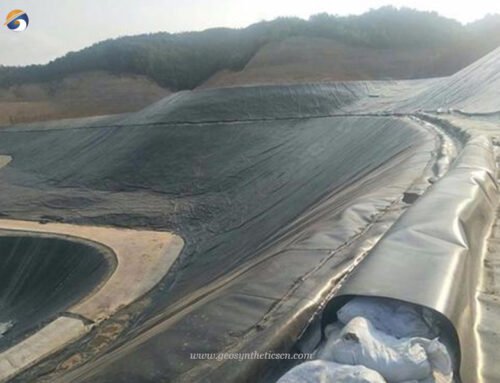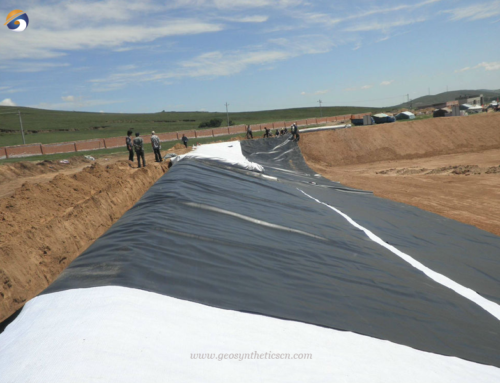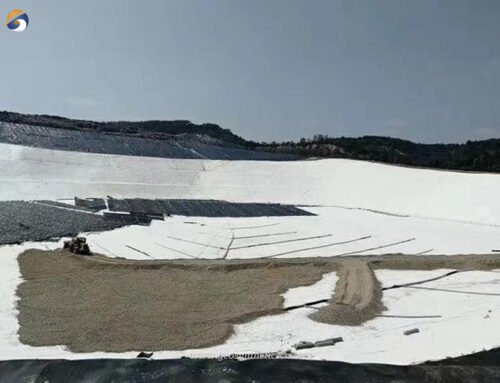HDPE geomembrane liner for wastewater is the waterproof barrier material based on high molecular polymer. HDPE geomembrane liner is generally mainly divided into low-density polyethylene (LDPE) geomembrane, high-density polyethylene (HDPE) geomembrane.
Geomembrane liner is a geotechnical anti-seepage material composed of plastic film as the anti-seepage base material and non-woven fabric. It is a kind of waterproof building material that prevents seepage and moisture. seepage performance.
HDPE geomembrane liner for wastewater is blow molded by adding a certain proportion of carbon black masterbatch, anti-aging agent, antioxidant, ultraviolet absorber, stabilizer, etc. to polyethylene resin. Water conservancy projects such as artificial lakes and reservoirs.
CASE STUDY
- Location – New Zealand
- Product(s) – High Geomembrane Liner
- Application – Wastewater Treatment
Issue
1. Introduction to Sewage and Its Impact on the Environment:
Industrial and mining activities generate large volumes of sewage containing acidic, alkaline, toxic, and harmful substances. These pollutants have detrimental effects when they infiltrate the ground, severely impacting the human living environment. The treatment processes for such sewage can also produce temperature changes that affect the physical and chemical reactions on the surface layers of containment structures, potentially causing damage. Therefore, water treatment systems require stringent anti-seepage measures.
2. Anti-Seepage Technologies in Water Conservancy Projects:
One widely utilized method for preventing seepage in water conservancy projects is the use of geomembrane anti-seepage technology. This approach is known for its cost-effectiveness and efficient anti-seepage performance. It is particularly popular in projects involving long-distance water transport due to its low cost and reliable effectiveness. Another technique is concrete anti-seepage technology, which employs a mixture of cement, lime, and aggregates to reinforce the bottom and sides of sewage channels. While this method offers superior anti-seepage performance, it comes with significantly higher construction costs compared to geomembrane technology.
3. Comparison and Application of Anti-Seepage Technologies:
When selecting an appropriate anti-seepage method, project planners must consider factors such as cost, effectiveness, and specific site conditions. Geomembrane anti-seepage technology is often preferred for its balance of affordability and performance, making it suitable for most standard applications. In contrast, concrete anti-seepage technology, while more expensive, may be justified in scenarios where higher durability or enhanced structural integrity is required. Ultimately, the choice between these technologies hinges on the specific needs and constraints of the project at hand.

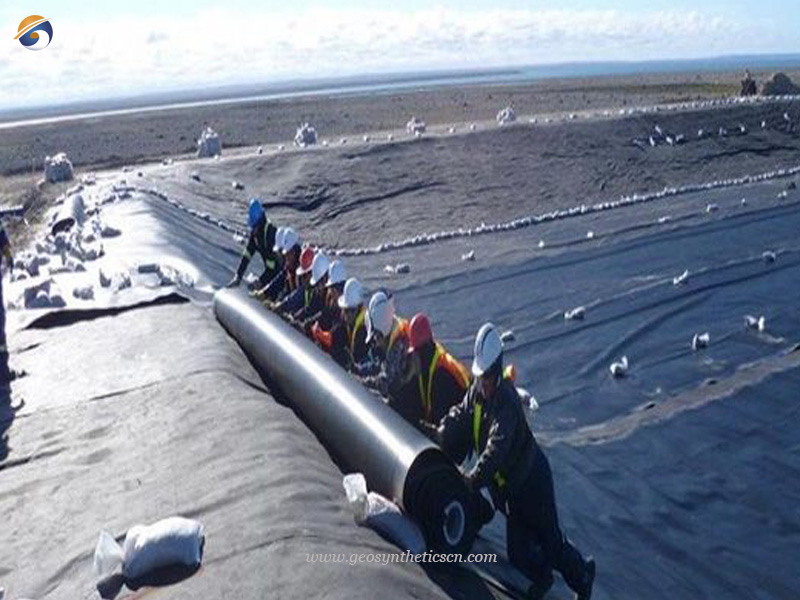
Solution
1. Challenges in Sewage Treatment:
Sewage treatment tanks often contain a variety of harmful substances, including alkaline, acidic, and other chemicals. These substances can undergo changes during the water treatment process, which places stringent demands on the anti-seepage measures employed. The presence of such hazardous components necessitates a reliable and durable anti-seepage solution to prevent contamination and ensure environmental safety.
2. Advantages of GEOSINCERE HDPE Geomembrane Liner:
GEOSINCERE’s HDPE geomembrane liner stands out for its exceptional chemical stability, making it an ideal choice for sewage treatment, chemical reaction tanks, and landfill applications. This high-density polyethylene liner boasts resistance to extreme temperatures, as well as compatibility with challenging substances like asphalt, oil, acid, alkali, salt, and over 80 types of strong acid and alkali chemical media. Its superior anti-seepage performance ensures effective containment of harmful substances, while its low cost makes it an economically viable option for lining sewage treatment tanks.
3. Economic and Practical Benefits:
The use of high-density polyethylene geomembrane in sewage treatment applications offers significant economic advantages. With its low comprehensive cost and minimal investment requirements, it provides an affordable yet highly effective solution for achieving sewage anti-seepage standards. This has led to its widespread adoption in wastewater and sewage treatment projects, where it delivers commendable anti-corrosion and anti-seepage performance, ensuring long-lasting protection against environmental contamination.
Benefit
1. Introduction to High Density Polyethylene (HDPE) Geomembrane Liner:
High Density Polyethylene (HDPE) Geomembrane Liner for wastewater treatment is a low permeability liner manufactured from premium grade polyethylene raw material. Enhanced with carbon black, antioxidants, anti-aging, and UV-resistant components, this liner exhibits exceptional chemical resistance, superior stress crack capability, minimal permeability, and outstanding UV resistance. The GEOSINCERE brand HDPE geomembrane liner is extensively utilized in various applications including waste containment, water storage, aquaculture, energy, mining, industrial, and civil engineering projects.
2. Economic and Practical Advantages of HDPE:
The widespread popularity of high-density polyethylene can be attributed to its low initial material cost coupled with excellent resistance to ultraviolet (UV) rays and chemicals. HDPE’s versatility extends to numerous applications such as liners for sewage treatment tanks, where its chemical resistance is highly beneficial, pond linings, and water storage facilities. This material’s unique combination of affordability and performance makes it the material of choice for many environmental and industrial applications.
3. Quality Assurance and Industry Standards:
GEOSINCERE polyethylene geomembrane adheres to stringent industry standards and undergoes rigorous laboratory quality consistency testing. All GEOSINCERE brand HDPE geomembrane liners have achieved ISO9001, ISO14001, TUV, Soncap, SASO, BV certifications among others, and have successfully passed tests conducted by reputable organizations such as SGS and Intertek. These accreditations and endorsements underscore the product’s reliability, quality, and compliance with international standards, making it a trusted choice for diverse applications worldwide.
Laying of High Geomembrane Liner for wastewater
- Before laying HDPE geomembrane liner, there should be the corresponding acceptance certificate of civil engineering.
- Before cutting the high-density polyethylene geomembrane, the related dimensions should be accurately measured, and then cut according to the actual situation. Generally, it is not suitable to cut according to the size shown in the figure. It should be numbered one by one and recorded in detail on the special form.
- When laying HDPE geomembrane liner, we should strive to have fewer welds, and save raw materials as much as possible under the premise of quality. At the same time, the quality is guaranteed.
- The overlapping width of the joint between the HDPE geomembrane liners the membrane is generally not less than 10cm, and the direction of the welding seam is usually arranged parallel to the large slope, that is, arranged along the slope direction.
- Usually in the corner deformity area, the joint length should be shortened as much as possible. Except for special requirements, on slopes with a slope greater than 1:6, within 1.5 meters from the top slope or the stress concentration area, try not to set up welds.
- During the laying of HDPE geomembrane liner, artificial wrinkles should be avoided. When the temperature is low, it should be pulled as tight as possible and paved flat.
- After the laying of the high-density polyethylene geomembrane is completed, walking and moving tools on the membrane surface should be minimized, and any objects that can cause harm to the anti-seepage membrane should not be placed on the membrane or carried on the membrane. , so as not to cause accidental damage to the membrane.
Specifications of High Geomembrane Liner for Wastewater Treatment in New Zealand
- Total HDPE Geomembrane Liner – 40,000 squares meters
- HDPE Geomembrane Liner Thickness – 2mm
- Each roll size is 7m*50m
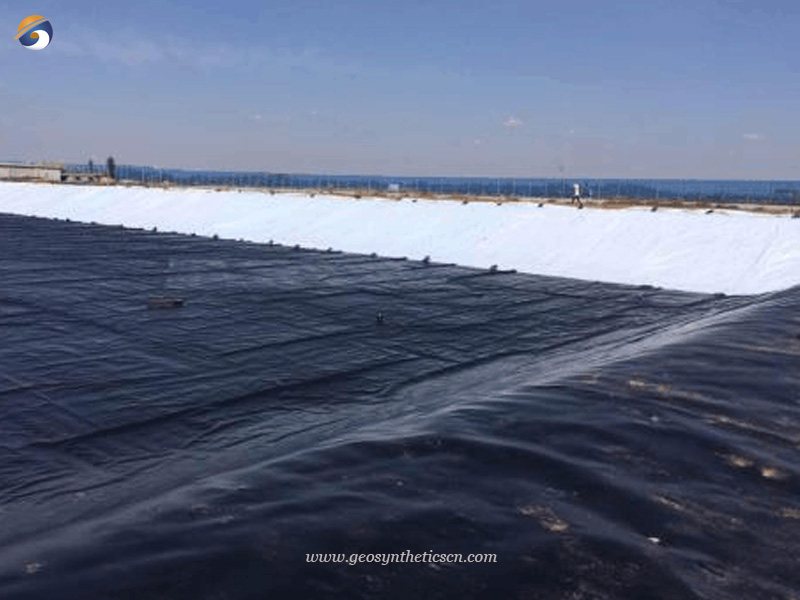
About GEOSINCERE
GEOSINCERE has been dedicated to manufacturing geomembrane and geosynthetics products and solutions to worldwide customers since its foundation in 2007. Our main innovative, high quality products include geotextiles, geomembranes, geogrids, geocells, geosynthetic clay liners, and drainage boards, etc al. GEOSINCERE customers are from more than 126 countries including America, Australia, France, Sweden, UK, Hong Kong, Hungary, New Zealand, Poland, Mexico, Ecuador, Brazil, Pakistan, Bangladesh, Thailand, Vietnam, Malaysia, Indonesia, Singapore, Philippines, Sri Lanka, India, UAE, Saudi Arabia, Qatar, Kenya, Ghana, Ethiopia, Somalia, Nigeria, South Africa, Swaziland, Mongolia, etc.
GEOSINCERE offers both high quality geosynthetic products but also professional design and installation service. OEM, ODM, custom development and fabrication are also available. If you have any questions or inquiries, please fill and submit the following form, we will reply as soon as possible.

